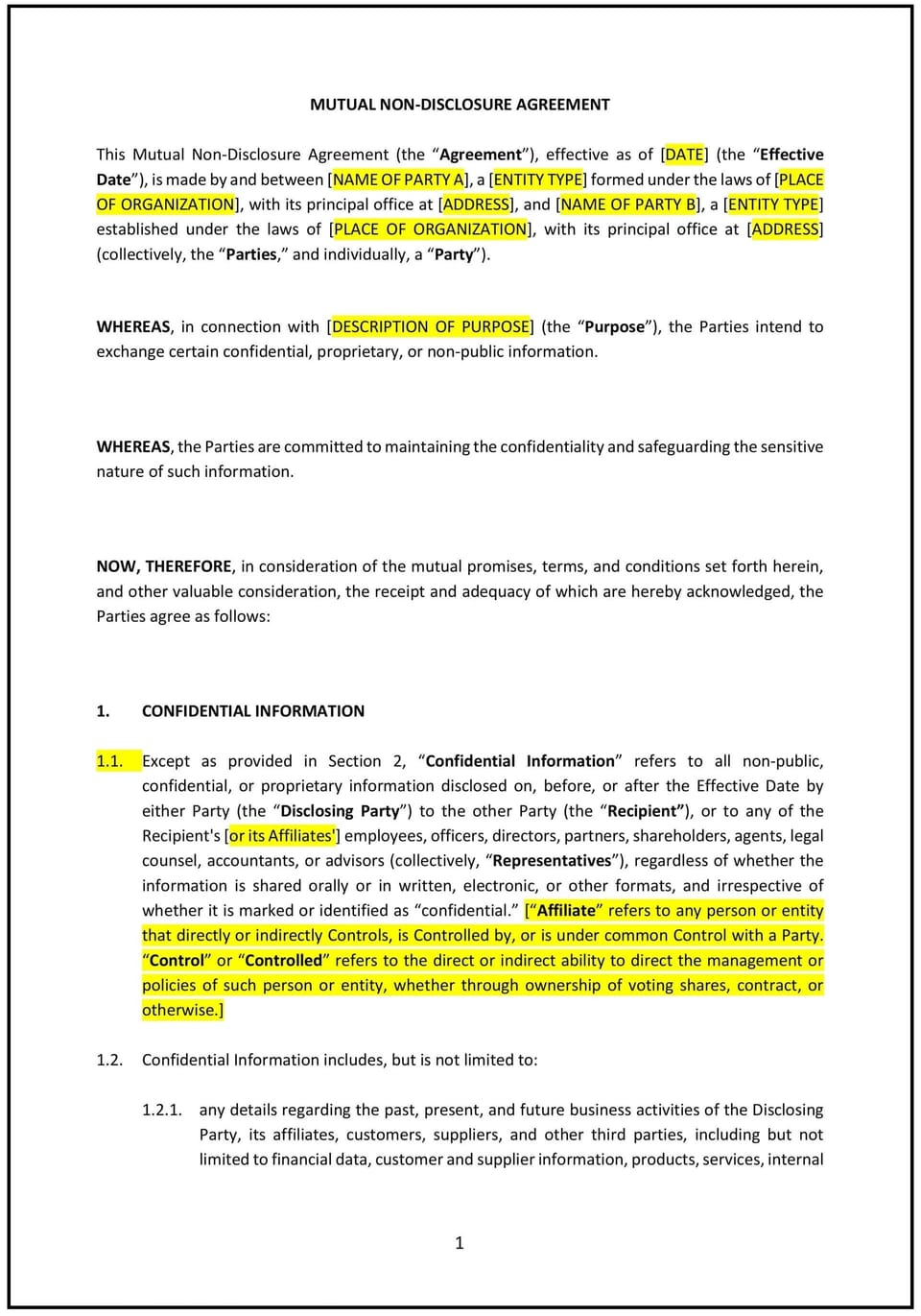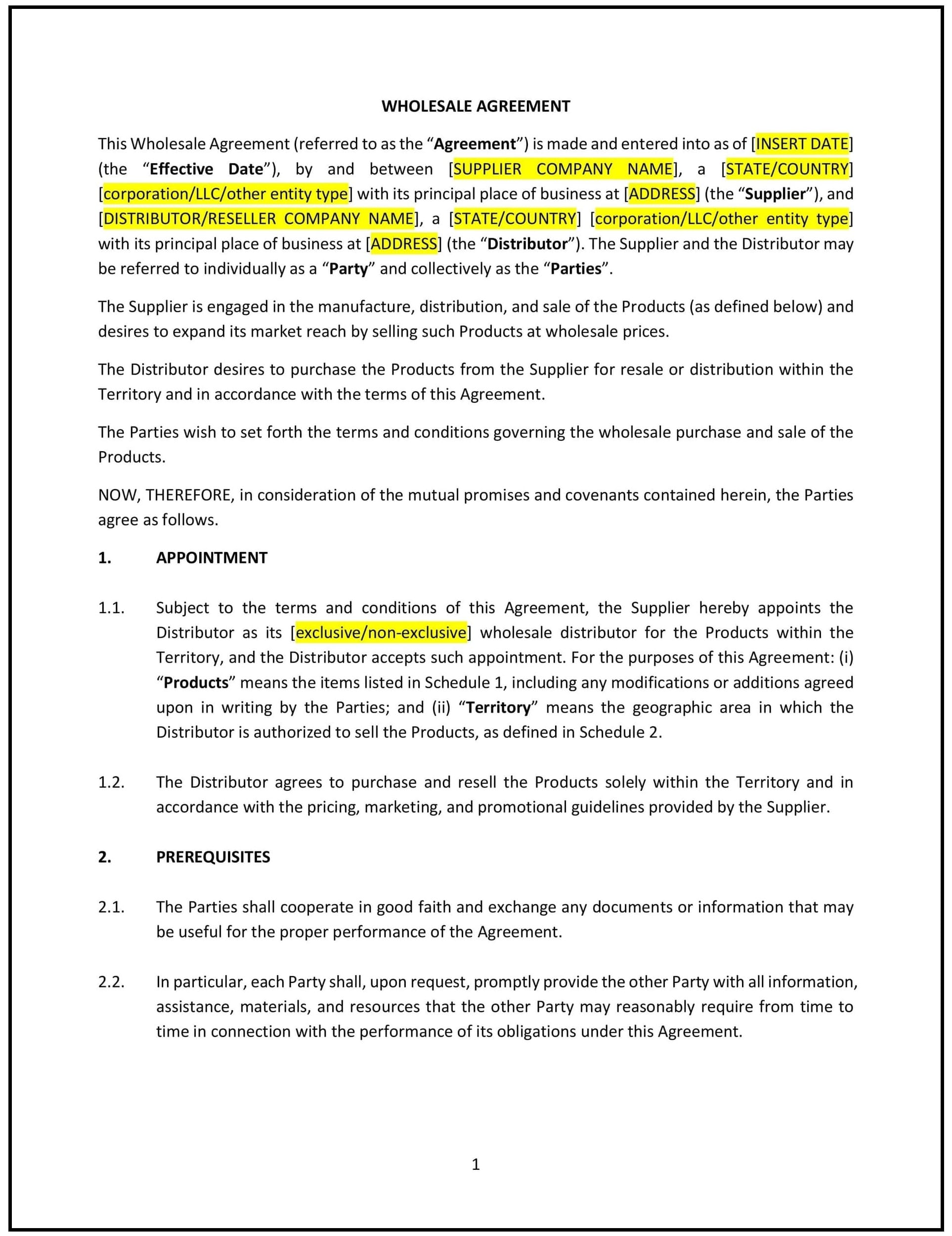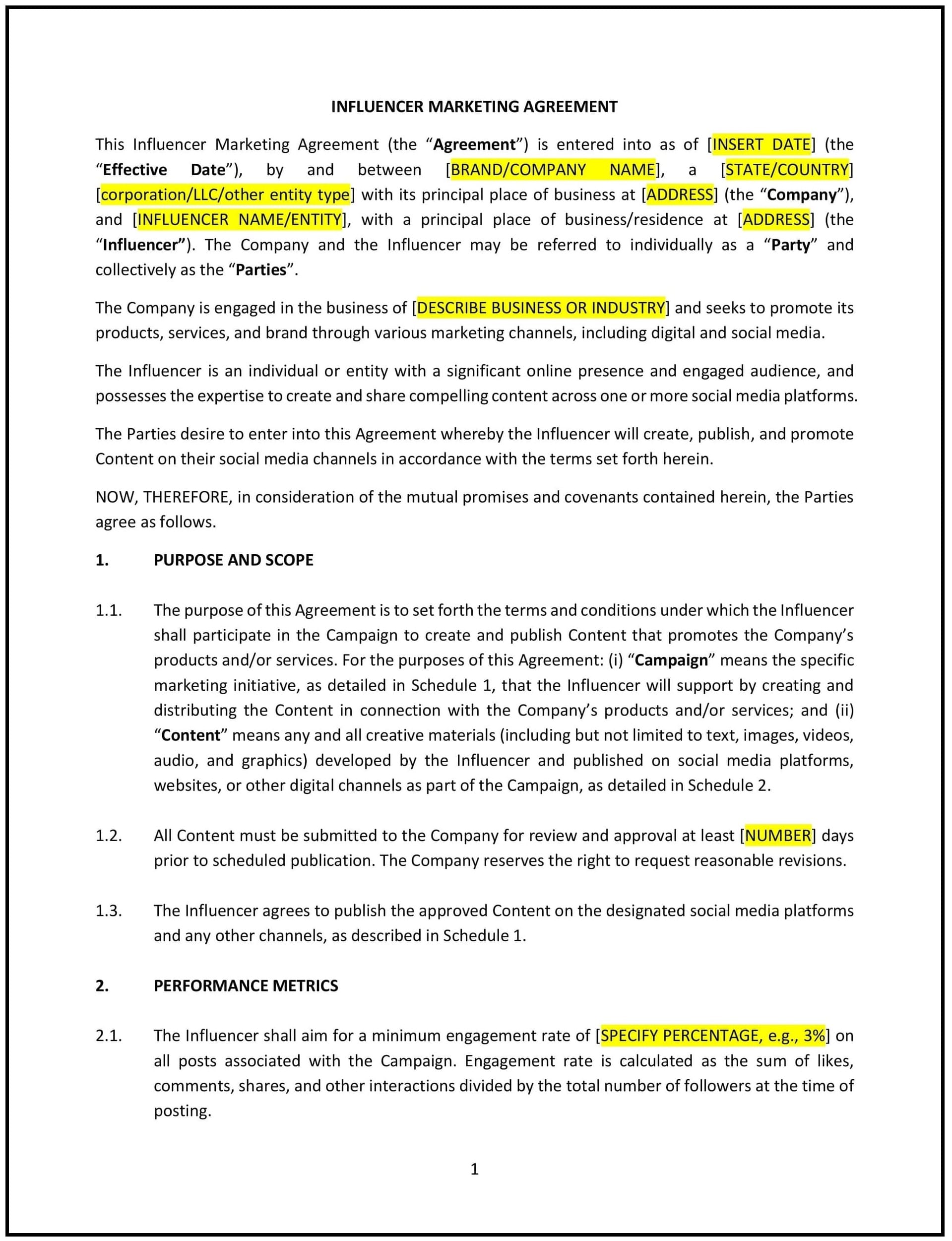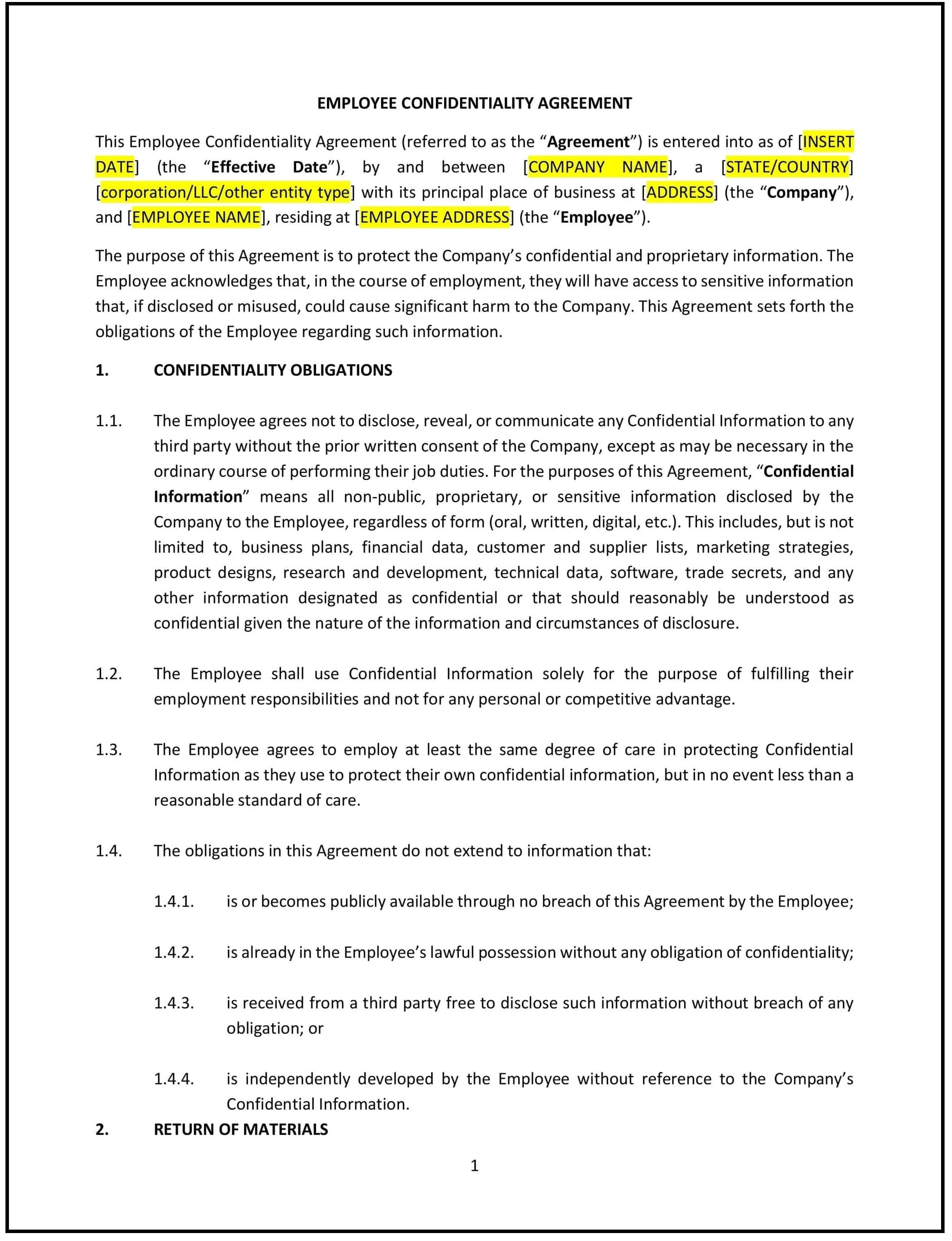Non-Disclosure Agreement (Mutual) (Wyoming): Free template

Non-Disclosure Agreement (Mutual) (Wyoming)
A Mutual Non-Disclosure Agreement (NDA) is a legally binding contract where both parties agree to protect each other’s confidential information. In Wyoming, this type of agreement is commonly used in business partnerships, joint ventures, and collaborations where sensitive information is exchanged. A Mutual NDA ensures that neither party can disclose or misuse the other’s proprietary data, trade secrets, or business strategies.
Wyoming’s business-friendly environment, with no corporate income tax and low regulatory burdens, makes it an attractive state for partnerships and collaborations. However, businesses must ensure compliance with state-specific laws, such as Wyoming’s contract enforcement rules and the Wyoming Uniform Trade Secrets Act (WUTSA). A well-drafted Mutual NDA protects both parties’ interests and fosters trust in business relationships.
For example, two tech startups in Wyoming might use a Mutual NDA to share product development plans, while a manufacturing company and a supplier might use it to protect proprietary processes. A Mutual NDA is particularly useful in industries like energy, technology, and healthcare, where sensitive information is often exchanged.
Tips for drafting and maintaining a Mutual Non-Disclosure Agreement in Wyoming
- Define confidential information clearly: Specify what constitutes confidential information for both parties. For example, include categories like business plans, financial data, customer lists, and technical specifications. Avoid vague language to prevent disputes.
- Include mutual obligations: Ensure both parties are equally obligated to protect each other’s confidential information. This creates a balanced agreement that fosters trust and collaboration.
- Set a reasonable duration: Wyoming courts may reject NDAs with indefinite confidentiality periods. Specify a time frame (e.g., 2-5 years) that is reasonable based on the nature of the information.
- Address permitted disclosures: Outline situations where disclosure is allowed, such as in response to a court order, government investigation, or legal requirement. This helps prevent unintended breaches.
- Comply with Wyoming laws: Ensure the NDA adheres to Wyoming’s contract laws and the Wyoming Uniform Trade Secrets Act (WUTSA). This ensures enforceability and protects trade secrets.
- Regularly review and update: Periodically update the agreement to reflect changes in the scope of the relationship or business needs. For example, if the parties begin sharing additional types of information, amend the NDA to include these.
Frequently asked questions (FAQs)
Q: What is the enforceability of a Mutual NDA in Wyoming?
A: Mutual NDAs are enforceable in Wyoming if they are reasonable in scope, duration, and geographic reach. However, courts may invalidate overly broad or restrictive agreements.
Q: Can a Mutual NDA be used for partnerships in Wyoming?
A: Yes, Mutual NDAs are commonly used in partnerships, joint ventures, and collaborations in Wyoming to protect shared confidential information.
Q: What industries commonly use Mutual NDAs in Wyoming?
A: Industries like technology, energy, healthcare, and manufacturing frequently use Mutual NDAs in Wyoming to protect sensitive information during collaborations.
Q: How long should a Mutual NDA last in Wyoming?
A: The duration should be reasonable based on the nature of the information. Typically, 2-5 years is acceptable, but indefinite periods may be rejected by Wyoming courts.
Q: What happens if a Mutual NDA is breached in Wyoming?
A: The non-breaching party can seek legal remedies, including injunctions, damages, and attorney’s fees. Under WUTSA, businesses can also seek remedies for trade secret misappropriation.
This article contains general legal information and does not contain legal advice. Cobrief is not a law firm or a substitute for an attorney or law firm. The law is complex and changes often. For legal advice, please ask a lawyer.


